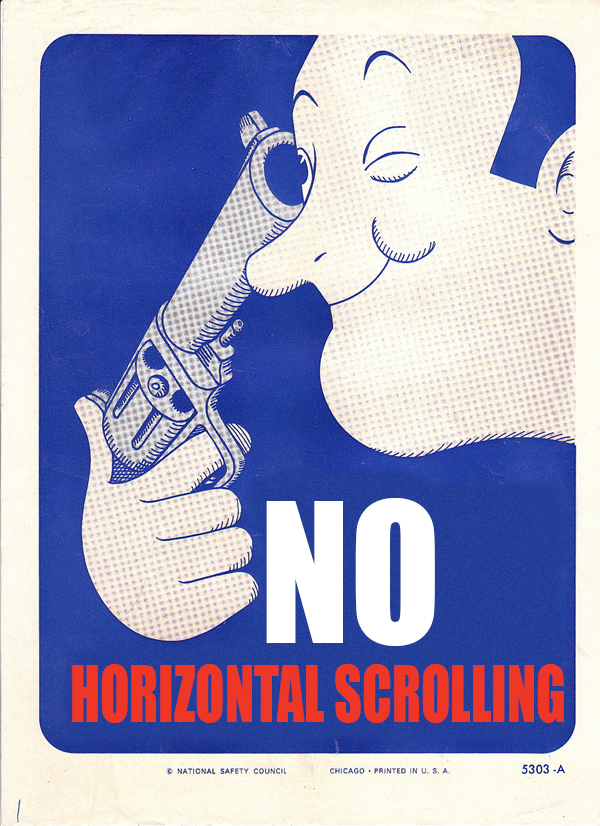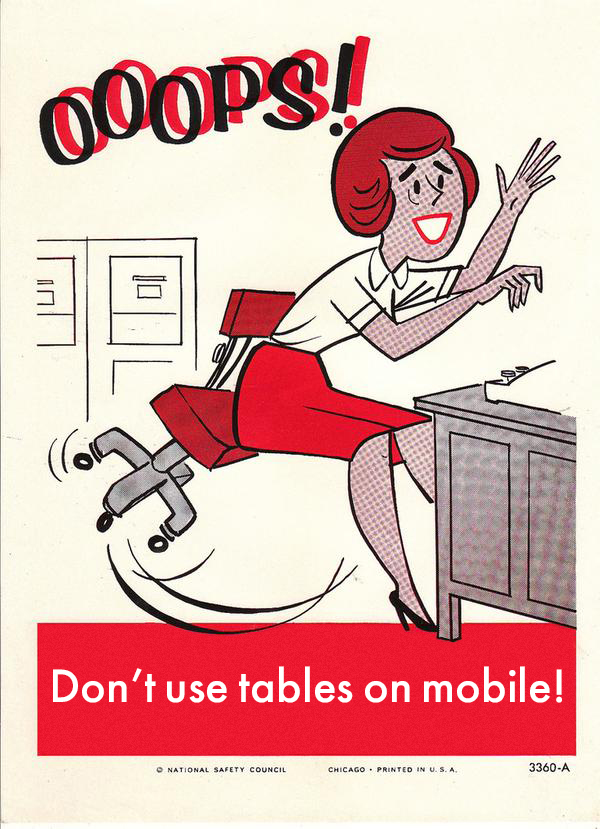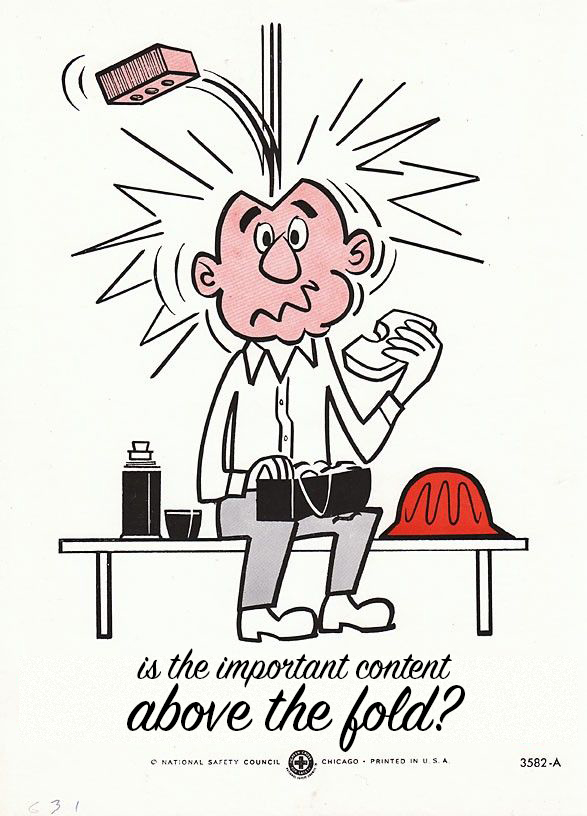Best Practice on Best Practice, or Horizontal Scrolling is Totally Okay I Promise
Nielsen Norman Group 2002:
“Users hate scrolling left to right. Vertical scrolling seems to be okay, maybe because it's much more common.”
https://www.nngroup.com/articles/top-ten-web-design-mistakes-of-2002/
Nielsen Norman Group 2005:
“Although horizontal scrolling was one of the top-ten web design mistakes of 2002, I continue to see this abomination. It's therefore worth warning against it again.”
https://www.nngroup.com/articles/scrolling-and-scrollbars/
Nielsen Norman Group 2014:
“the disdain for {horizontal scrolling} is so widespread, that I like to use it to illustrate what user experience is to people unfamiliar with the field… I ask if they can think of a website scrolling horizontally. They usually groan and say they hate it…”
https://www.nngroup.com/articles/horizontal-scrolling/
Unfortunately, we read articles with opinions like this {or, worse, clients or stakeholders read them} and we are supposed to start applying these ideas as ‘best practice’. It's true that these conclusions do take into consideration user feedback. But their feedback is based on the way that they typically interact with technology as a whole, based on their exposure and history. There is no specific context or design intent identified, nor is there any specific feedback as to why. Is it because the scrollbars are hidden by default? Is it because the wheel on the mouse only scrolls up and down?
Generalized disdain shouldn't be the basis for 'industry standards.'
This type of thinking is toxic. Just because some people don't like broccoli - even if most people don't like broccoli - is that reason enough to ban broccoli entirely or radicalize people who do like it?



It's never best practice to categorically discount any solution. Even if it’s not 'right', exploration could lead to a new, different, and better direction.
Here's an example
Once upon a time, if you asked people 'Do you like carrying a full chamber pot down three flights of narrow stairs?', they would say 'I hate that!' Especially when it was perfectly acceptable to dump it (phrasing intentional) out the window. Convenient for users, not so much for pedestrians. But since there were no alternatives, this was something that everyone just lived with.
Raise your hand if you're glad that someone decided not to accept this as 'best practice'.
And let's take a moment to thank them for indoor plumbing.

Okay, so how did vertical scrolling become the only acceptable method...?
A Brief History of Scrolling on Computers

Egyptians were using papyrus scrolls as early as 3000 BC
Notice how the content is laid out in horizontal columns. However, there are two big usability issues with scrolls.
First, they can be unusably large. The longest known egyptian scroll is 40 meters. Also, they only provide serial access, so if you're looking for something near the end, you have to unroll the entire scroll to find it.

<- Funerary Papyrus of the Steward Sethnakht ca. 1320–1200 B.C

The Romans didn’t accept scrolls as best practice, so about 1500 years ago they created the codex.
It’s sturdy and portable. The structure and format lends itself to easy reproduction. You can use both sides of the page. It can be laid flat and held with one hand while you take notes with the other, or you can take notes directly on the pages.
It quickly became the dominant form of written recording across the world. Notice that the content is laid out in columns, similar to the scroll. The Romans had no problem with the way information was presented, just how it was constructed and accessed.

The first machines used to record documents were typewriters. You entered a single line of text at a time and moved from top to bottom on a page.
There was a limit to the amount of text that could fit on each line.
Early computers used punch cards. Each card represented a single line of code. There were 80 columns for a total of 80 characters.


The first video display monitors were created to replace the punch card. In fact, they were sometimes referred to as 'glass keypunches.'
The keyboard was based on the typewriter, and the screen, like a typewriter, had a fixed number of columns - 80 to be exact. The same number of columns as a punchcard. When a column was full, the cursor would jump down to a new line. When the screen was full, the content would scroll up, creating a blank line below it for the new content.
Vertical scrolling was developed by computer programmers for computer programmers to do computer programming.
Early computer interfaces were completely text-based and had no need for horizontal scrolling. They are obviously quite different now. Almost everything has a graphical user interface, so perhaps it's worth considering - or at the very minimum, not completely discounting - alternative interaction options that can be implemented where appropriate and useful.

Try telling this guy that horizontal scrolling is an 'abomination'...
Super Mario Bros. has sold over 58,000,000 copies since 1985. 'Side-scrolling' video games are still being made, and many are extremely popular.
Left and right movement across a screen isn't a novel concept, nor is it categorically rejected by the whole of humanity.
The way we interact with computers is constantly evolving. Best Practices can't be an excuse or a shortcut.
They are definitely useful, but make sure you know why. And always try to understand the problem you’re trying to solve and create the best solution, even if it's something new, different, or crazy. Maybe different is good. Maybe people will like it.
You can never know unless you try.